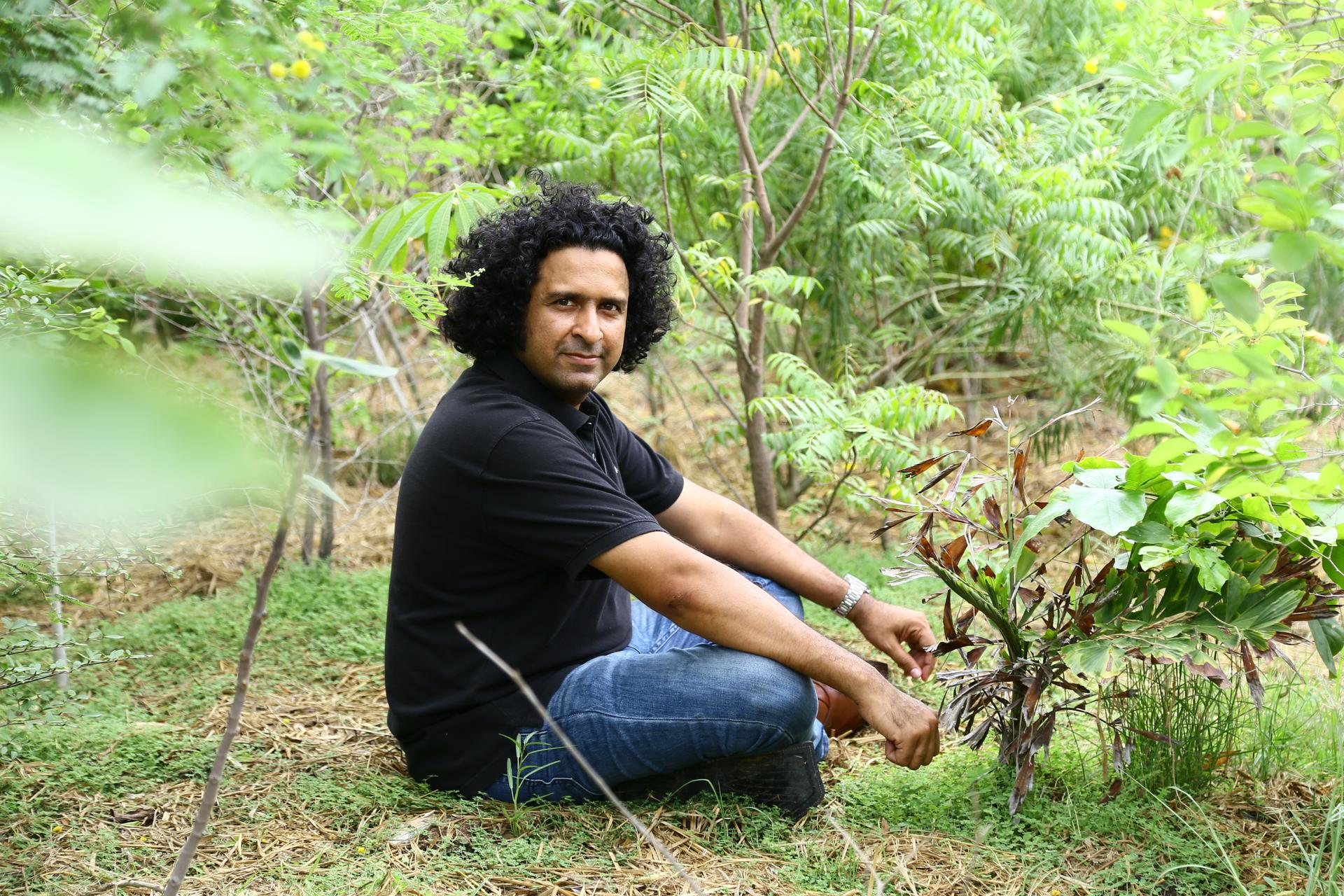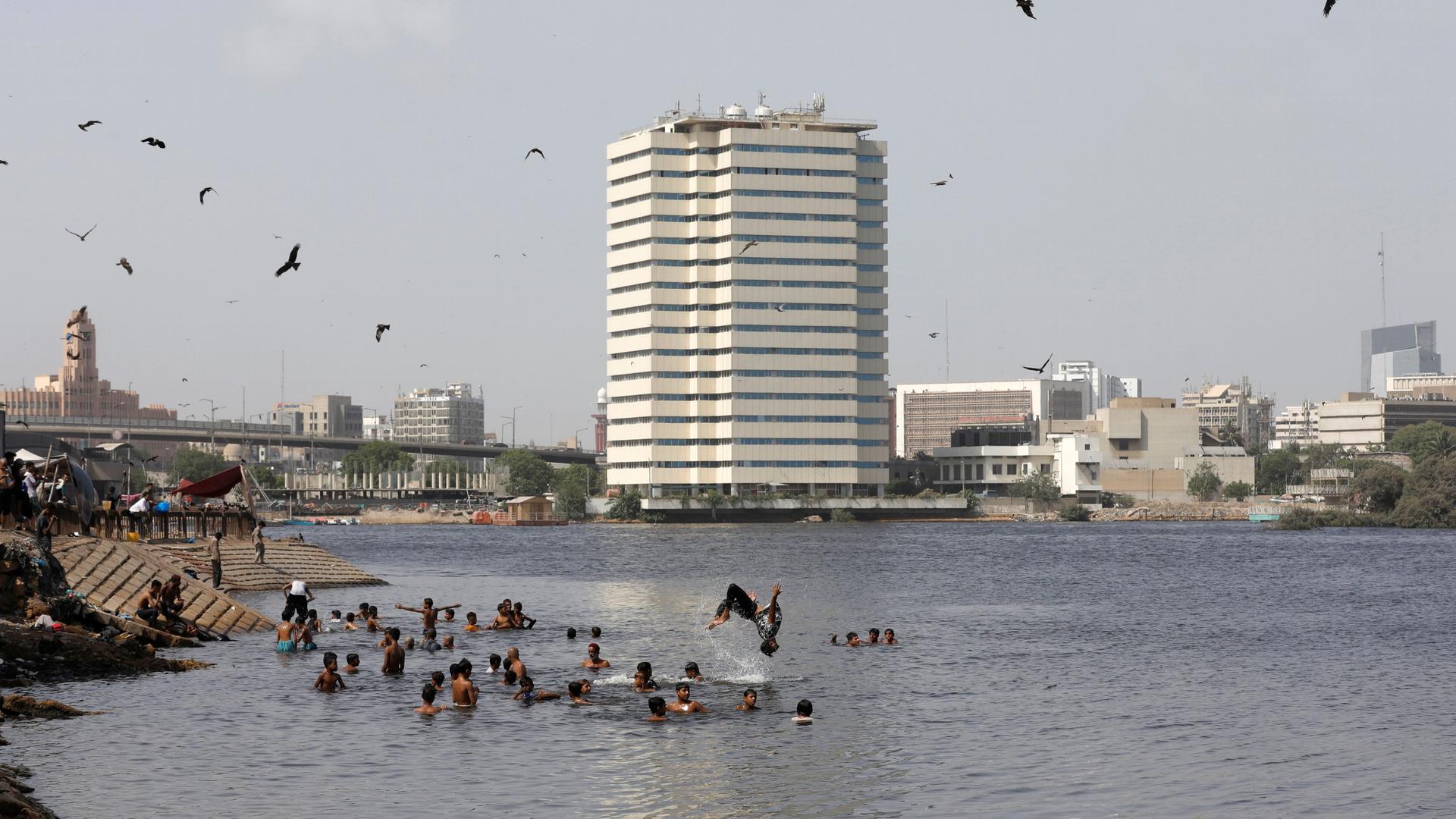Extreme heat often hovers over Karachi, Pakistan’s largest city, creating insufferable conditions for its 16 million inhabitants.
But each time Karachi resident Shahzad Qureshi transforms a barren patch of land into a dense, urban forest, he helps his city adapt to extreme urban heat that has become inevitable under climate change. Over the last four years, Qureshi’s organization, Urban Forest, has planted 14 urban forests in parks, schools, people’s yards and outside of a mosque.
Related: Regrowing Australia’s forests may require human intervention
Qureshi’s quest to plant urban forests started in 2015, when temperatures reached over 120 degrees Fahrenheit in Karachi. About 2,000 people in the region died from dehydration and heatstroke.
It was devastating.
“It was just one of those times where you just ask, ‘what the hell is wrong with this place?’ And one of the things everybody was talking about is that there’s not enough green cover.”
“It was just too hot,” Qureshi said. “It was just one of those times where you just ask, ‘what the hell is wrong with this place?’ And one of the things everybody was talking about is that there’s not enough green cover.”
Around that time, Qureshi saw a TED Talk that changed his life. He listened to a man named Shubhendu Sharma sharing a method to quickly grow dense urban forests. Qureshi was amazed.
“The TED Talk sounded just so beautiful at that time,” Qureshi said. “I was like, ‘I have been shown this light, and if I’m not going to run for it, who will?’”
Qureshi decided to learn Sharma’s technique and bring it to Karachi, joining a growing global community of urban foresters who want to help their cities adapt to extreme urban heat events created by rapid climate change. He believed Sharma’s technique could transform Karachi, which has a relatively low green cover compared to other big cities in the world.
Related: This ‘cloud curtain’ in Peru’s tropical forests mimics the future
“Within two or three years, we see a barren patch of land getting converted into forest. And that’s the kind of motivation we need right now everywhere in the world.”
“Within two or three years, we see a barren patch of land getting converted into forest. And that’s the kind of motivation we need right now everywhere in the world,” said Shubhendu Sharma, whose TED Talk inspired Qureshi.

Sharma’s organization Afforestt has now helped plant 150 mini-forests in 13 countries.
“So, there is a quite strong global community right now,” Sharma said. “I am very keen on taking this method to every single country of the world.”
Sharma’s special technique is known as the Miyawaki method. It involves the close placement of a variety of trees with different growing speeds and light requirements to prevent competition for the same resources. The approach specifically uses native species, allowing trees to thrive in their original climates and environments while supporting native bird and insect populations.
“Most of the city is roads and buildings and built-up urban area,” said Nadeem Mirbahar, an ecologist with the Swiss International Union for Conservation of Nature Commission (IUCN) on Ecosystem Management, based in Karachi. His organization did a survey and found that only 7% of Karachi had green cover.
Related: A heat wave in Siberia signals dangerous Arctic warming
This contributes to an “urban heat island” effect, Mirbahar said. The phenomenon causes cities to be significantly hotter than the surrounding countryside. He thinks Karachi should strive for at least 25% green cover to avoid catastrophic heat events in the future.
Qureshi’s oldest urban forest is four years old and already has towering, 35-foot-tall Acacia trees full of big, thorny branches and birds’ nests.
“I have seen bird species in this park, which I have not seen in my life,” he said. “It’s a habitat for them.”
And when it comes to cooling, the urban forest is working. In the heat of the day, inside the forests can be up to 10 degrees cooler than the surrounding areas.
Trees are well-known solutions to urban heat. They provide shade, reflect some sunlight and release water, which cools the air around them — a process known as transpiration. But the world’s cities are losing trees faster than they are gaining them. As more people move to cities, trees and plants are cut down, paved over and replaced with buildings and roads that make cities hotter.
And climate change is making things worse. A recent study showed that in 50 years, about a third of the world’s population could live in unbearable heat.
“When it comes to urban heat and climate change, the risks to populations are not some hypothetical future threats. They’re really here and now.”
“When it comes to urban heat and climate change, the risks to populations are not some hypothetical future threats. They’re really here and now,” said Vijay Limaye, an extreme heat expert with the Natural Resources Defense Council in the US.
“All across South Asia, we’re detecting an increase in the frequency, intensity, duration, and even just the geographic aerial extent of extreme heat risks across the region,” he said.
Policymakers in Pakistan have started to look at planting trees as a solution to the urban heat threat, said Umer Akhlaq Malik, a policy analyst at the United Nations Development Program (UNDP) in Pakistan.
In 2016, the government launched a plan to plant hundreds of millions of trees as part of a project called “the Billion Tree Tsunami,” in response to the fact that the country had fallen to a mere 2% forest cover.
Malik said Qureshi’s Urban Forest initiative, and the idea of planting dense urban forests could be a good way to green a city that lacks space.
“With the limited city size, with the rapid growing population and lack of urban space, these urban forests, at least on paper, provide a good opportunity for urban greening,” said Malik. “To take it to scale, you need more practitioners who invest their time and energy into this.”
Malik said the biggest barriers are cost and space. Each forest can cost hundreds of thousands of dollars to establish.
But Qureshi remains hopeful that the project can scale up. He is working with the UNDP to form a coalition that aims to bring urban forests to every park in the city. He thinks Karachi could look fundamentally different.
“I am so hopeful that I think we can convert the city in five years’ time,” he said.
Malik isn’t sure that level of transformation will be possible, but he supports Qureshi’s ambition.
“You do need to aim big to achieve anything,” he said.
Our coverage reaches millions each week, but only a small fraction of listeners contribute to sustain our program. We still need 224 more people to donate $100 or $10/monthly to unlock our $67,000 match. Will you help us get there today?
